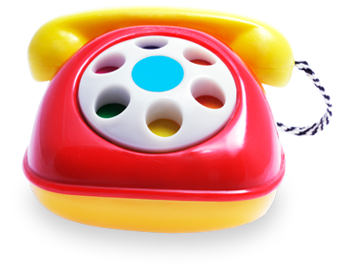About Plagiocephaly, Craniosynostosis, and Genetic Syndromes
Plagiocephaly
Babies are born with soft skulls that can develop flat spots when they spend too much time in one position. The flat spots are called deformational plagiocephaly and are the most common cause of abnormal head shape in infants. Plagiocephaly usually develops gradually over the first few months of life but can also develop in the womb. It can occur in twin pregnancies or if a child is born with a congenital stiff neck.
Plagiocephaly is primarily treated with repositioning exercises and possibly therapy. Helmet therapy may be prescribed for severe cases. Surgery is not necessary to correct deformational plagiocephaly, and this condition does not affect how your child’s brain develops. However, the earlier you seek evaluation of your child’s condition, the easier it is to reshape the soft bones of his or her skull.
Craniosynostosis
Unlike plagiocephaly, craniosynostosis is a birth defect. It occurs when the bone plates in the skull fuse earlier than usual. As a result, the skull can no longer grow larger normally. Instead, the skull compensates by growing in other directions, which results in an abnormal head shape. The exact shape depends on which parts of the skull are affected. The head could be long and narrow, pointy in the front, tall and round, or flat in specific spots. Craniosynostosis can increase pressure on your child’s brain. Surgical treatment is often necessary.
Apert, Crouzon, Pfeiffer Syndromes
If your child is diagnosed with craniosynostosis, genetic testing may be recommended to determine whether your child’s head shape abnormality is the result of a rare genetic disease such as Apert, Crouzon, or Pfeiffer syndromes.
Apert, Crouzon, and Pfeiffer Syndrome Treatments
Staged Surgeries
Children with Apert, Crouzon, Pfeiffer, or other genetic syndromes may have an abnormal growth in other parts of their facial skeleton in addition to fused skull bones. Treatment of abnormalities associated with these syndromes may require several staged operations. Pediatric plastic surgeons, neurosurgeons, otolaryngologists, and oral surgeons all may be involved in the series of operations needed to restore a normal shape to your child’s skull and face as he or she grows. We help you understand which treatments we recommend and coordinate your child’s care.
Your Child Is in Good Hands
You can be confident in our team’s extensive experience in treating children with craniosynostosis. Families from across North Carolina and surrounding states come to us for their children’s care.
Your Child's Team of Pediatric Experts
In addition to pediatric plastic surgeons and neurosurgeons, your child may be seen by our pediatric ophthalmologists; ear, nose, and throat doctors; oral surgeons; and orthodontists. Your child’s medical team may also include radiologists, pediatric anesthesiologists, genetic counselors, and therapists, as well as intensive care doctors and nurses who take care of your baby immediately after surgery.
Ongoing Follow-Up
We will continue to see your child annually for the first five years following surgery to ensure he or she has normal skull growth and brain development. If your child shows any delays in development, our expert team of pediatric neurologists, physical and occupational therapists, and speech pathologists can help your child overcome those delays.
High-Quality Surgical Care
Duke Children's is one of the few hospitals in the U.S. verified as a Level I children's surgery center by the American College of Surgeons. This designation recognizes our commitment to providing the safest and highest-quality surgical care to our young patients.

